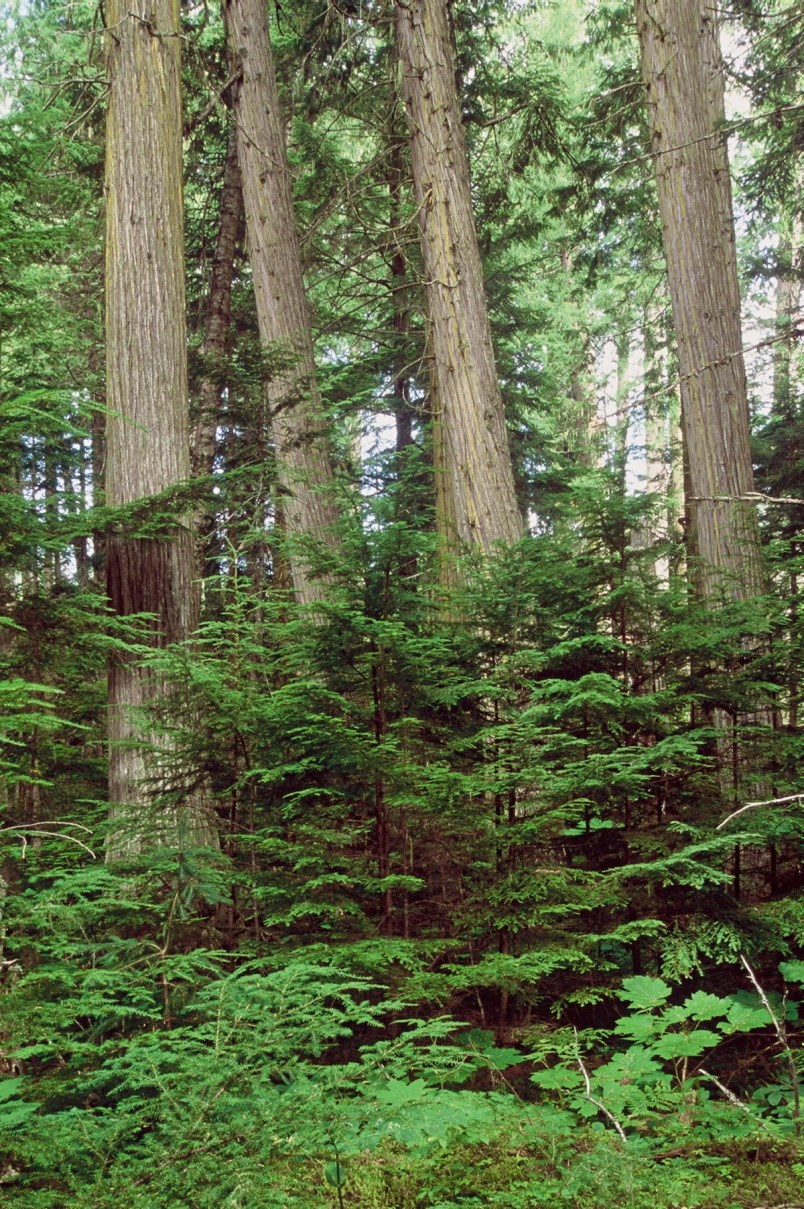Parksville is dealing with the “devastating loss of cedar trees in our parks” and is pinning the blame on summer droughts.
Dry weather does not agree with western red cedars, B.C.’s official tree. They fare best in cool, wet environments.
That is why we are seeing dead and stressed trees on southern Vancouver Island and the east side of the Island, where moisture has been in short supply this summer.
“At this time, cedar trees look quite ugly as the dead brown scale-like leaves hang on the trees,” a City of Parksville statement said. “The leaves will soon fall, leaving the silver ghosts to populate our forests.”
Municipal staff are monitoring trees to watch over public safety.
“Summer droughts over the past few years put severe stress on most of the trees in our urban forests, with cedars the most susceptible,” said the city, which plants hundreds of trees annually.
Patrick McIntosh, the City of Nanaimo’s urban forestry co-ordinator, said the impact of dry weather has been “especially noticeable in western red cedar.”
“The writing is on the wall — it is sort of migrating north because they can’t handle the hot, dry summers here any more.”
Western red cedar has long been one of the dominant tree species in the Nanaimo area but is “slowly, slowly dying out,” he said. “You get a summer like this one and you see stressed cedar trees everywhere.”
Because of the drought, Nanaimo’s urban trees received extra water this summer, McIntosh said.
Western red cedars may live more than 1,000 years. Some giants can stand close to 200 feet (60 metres) tall.
Its wood plays an important role in First Nations culture. It represented 18 per cent of B.C.’s coastal forest harvest in 2014 and generates more than $1 billion in B.C. annually, according to a March report from the Canadian Forest Service.
Cedar is a valuable wood used for everything from lumber to shakes, shingles and siding.
B.C. has the world’s largest stock of standing western red cedar. It grows from northern California to Alaska. In B.C., it is found mainly on Vancouver Island, the mainland coast and a wet belt in the Shuswap area.
Should we be concerned about the future of the western red cedar?
“I think it is too early to tell,” said Cosmin Filipescu, a research scientist in forest ecophysiology at the Pacific Forestry Centre in Saanich, which is part of the Canadian Forest Service within Natural Resources Canada.
“It is definitely something we are paying attention to and it is definitely something we are looking at in our research.”
He is part of a group involving scientists, First Nations, industry, research institutes, universities and governments that examines issues facing cedars.
One study is looking at how second-growth western red cedar responds to different climatic conditions.
Another study near Salmon Arm is investigating what genes are being activated by cedars during drought conditions later in the season.
Cedars are at risk of butt rot — an issue because decay affects the part of the tree most desirable to the forest sector — and leaf blight, caused by a fungus.
Filipescu has noticed cedars, including those in hedges and landscaping, under some stress in the capital region. The foliage starts to turn brown, particularly on the inside part of the crown of the tree.
“However, southern and eastern Vancouver Island is not prime territory for western red cedar,” he said.
“Cedar does best on western Vancouver Island where it is wetter and cooler. There’s quite a bit more fog. And on northern Vancouver Island and also the central and northern coast of B.C.”
Garry oak and Douglas fir are better suited to drier conditions, he said.
“There is no denying that the last couple of summers have been drier and warmer than usual,” Filipescu said.
“Now, is it part of a trend that will continue or is it just a blip and will revert to more normal weather seasons going forward?”
— Carla Wilson, Times Colonist



